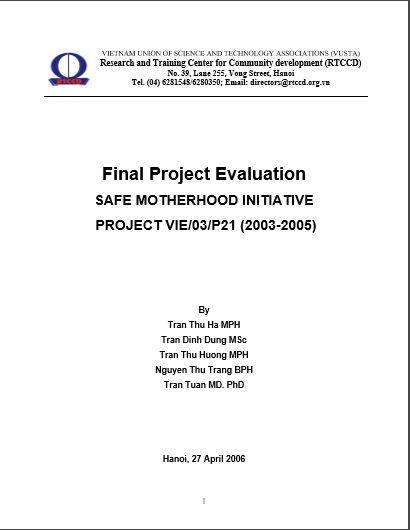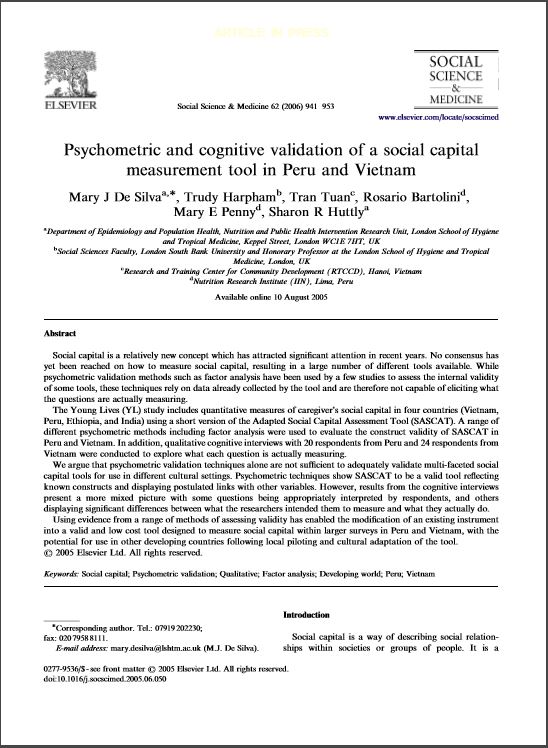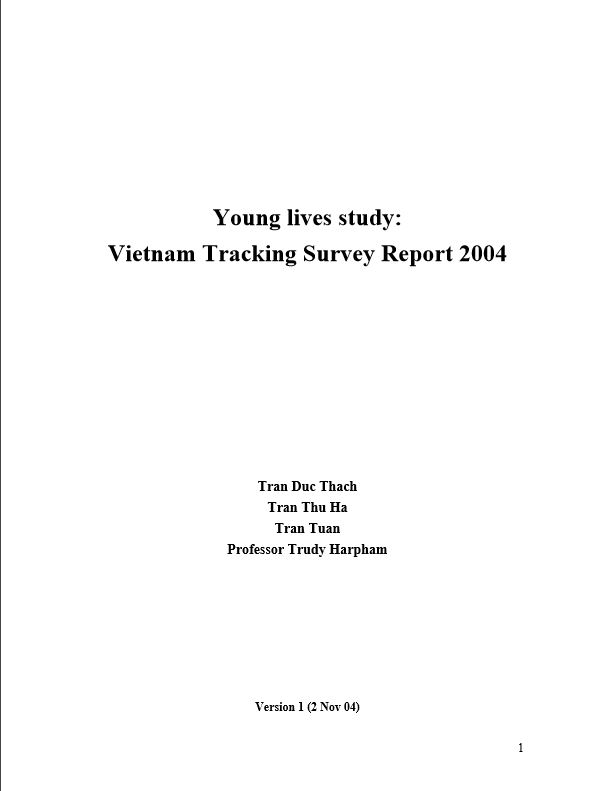
Safe motherhood initiative project: Final Project Evaluation
Author : TTT.Ha, TD.Dung, TTT.Huong, NTT.Trang, T.Tuan
Year : 2006
Area : Maternal & Child Health
Under the support of the Royal Netherlands Embassy (RNE), the Ministry of Health Vietnam (MOH) developed the National Plan on Safe Motherhood that was approved by the Minister of Health on November 5, 2003. The National Plan on Safe Motherhood (SMNP) consists of two phases of implementation. Phase I of the National Plan (2003-2005) aims […]

Psychometric and cognitive validation of a social capital measurement tool in Peru and Vietnam
Author :
Year :
Area :
Social capital is a relatively new concept which has attracted significant attention in recent years . No consensus has yet been reached on how to measure social capital, resulting in a large number of different tools available. While psychometric validation methods such as factor analysis have been used by few studies to access the internal validity of some tools, these techniques rely on data already collected by therefore not capable of eliciting what the questions are actually measuring
Young lives study: Vietnam Tracking Survey Report 2004
Author : TTT.Ha, TD.Thach, T.Tuan, T.Harpham
Year : 2004
Area : Maternal & Child Health
The Young Lives project is a 15-year longitudinal study on child poverty carried out in Ethiopia, India, Peru and Vietnam. In each of the countries, 2000 index children aged around one year and 1000 children aged around eight-years are surveyed. (http://www.younglives.org.uk) (Tuan et al., 2003). Attrition in longitudinal study results in diminishing numbers of respondents […]

Young lives study: Vietnam Tracking Survey Report 2004
Author :
Year :
Area :
As a longitudinal study, Young lives project follows up 2000 index children aged around one year and 1000 children aged around eight-years in each of four countries (Ethiopia, India, Peru and Vietnam) over a fifteen-year period.
Aim to maximase respondent follow-up, a tracking survey was carried out at the time before round 2 starts to (1) identify children who are likely to be available for the next round and those who cannot be traced, (2) check the accuracy of children and their families’ addresses and general information (3) compare the survey output and regular tracking output.